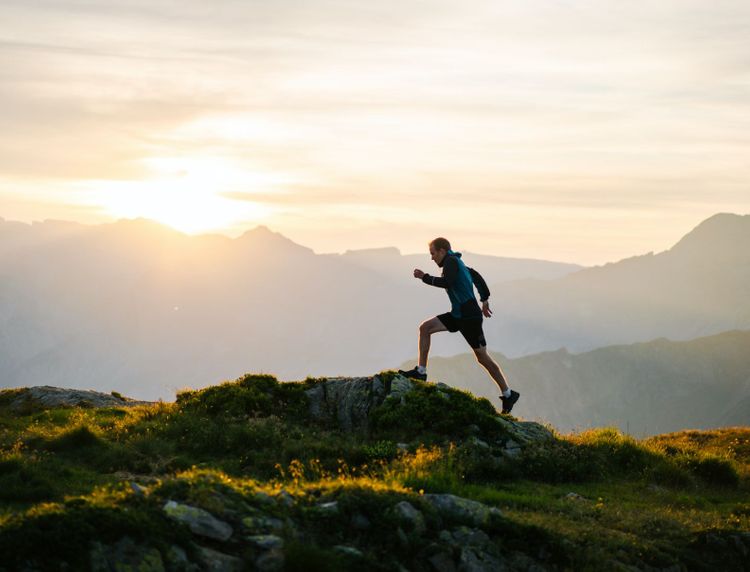Health Benefits of Kurmasana (Tortoise Pose)
Have you ever wondered how a tortoise can live for hundreds of years and what secrets it holds for longevity and well-being? The answer may lie in its ability to withdraw its senses and connect with its inner core, a state of deep relaxation and awareness that yoga practitioners call pratyahara.
Today, we will explore one yoga pose that can help you achieve this state of mind and body: Kurmasana, also known as Tortoise Yoga Pose or Turtle Pose.
Instead of blindly following this pose, understanding Kurmasana's steps and benefits is crucial.
Share this article
List of Content
- How to Perform Tortoise Pose Yoga — Stepwise Explanation
- Kurmasana Benefits and Precautions
- Contraindications of Kurmasana Yoga
- Conclusion
- FAQS
How to Perform Tortoise Pose Yoga — Stepwise Explanation
Kurmasana is a challenging pose that requires flexibility, strength, and balance.
It is not recommended for beginners but rather for intermediate or advanced yoga students who have mastered the preparatory poses, such as Garudasana (Eagle Pose), Utkatasana (Chair Pose), Uttanasana (Standing Forward Bend), Utthita Parsvakonasana (Extended Side Angle Pose), and Adho Mukha Svanasana (Downward Facing Dog Pose).
Here are the steps to perform Kurmasana:
With your back upright and your legs open, sit on the ground. Make sure your toes face outwards.
Bring your feet near your hips and bend your knees. Place your palms on the floor between your legs and slide them forward as far as possible.
Lift your hips off the floor and lower your torso between your legs. Bring your chest and chin as close to the floor as possible.
Slide your arms under your legs and extend them to the sides. Try touching your elbows to the floor and cling your hands behind your back.
Hold the pose for as long as you feel comfortable, breathing normally and relaxing your muscles.
To release the pose, slide your arms out from under your legs and lift your torso and hips off the floor. Straighten your legs and relax.
Some tips for beginners are:
Do not overstrain your muscles or joints if you feel pain or discomfort. Back off and modify the pose according to your level of flexibility and strength.
Use a yoga strap or a towel to clasp your hands behind your back if you cannot reach them.
Use a yoga block or a cushion to support your chest or chin if you cannot touch the floor.
If you have any injuries or medical conditions that could impact your practice, seek advice from a yoga expert or a doctor before trying the pose.
Kurmasana Benefits and Precautions
Kurmasana is a powerful pose that can offer many health benefits, both physical and mental. Here are some of the Kurmasana benefits:
Tones Abdominal Area
Kurmasana compresses and massages the abdominal organs, improving their function and eliminating toxins. It also helps to regulate the metabolism and appetite and prevent constipation and indigestion.
Stretches Muscles
Kurmasana lengthens and aligns the spine, improving the posture and reducing the tension and stiffness in the back. This can also increase the joints' flexibility and range of motion by stretching and opening the hips, hamstrings, and shoulders.
It is beneficial for easing the inflammation and pain that sciatica causes. Sciatica refers to an ailment where the sciatic nerve, which goes from the legs to the lower back, is affected.
Improves Blood Circulation
Kurmasana enhances blood flow throughout the body, especially to the pelvic and reproductive organs.
This can improve the reproductive health and fertility of both men and women and alleviate menstrual cramps and irregularities in women.
Stimulates Gland Functioning
Kurmasana activates the endocrine system. This system produces and secures hormones that regulate various bodily functions, such as growth, development, mood, sleep, and stress. It also stimulates the brain's pituitary, pineal, and hypothalamus glands and controls the secretion of other hormones, such as thyroid, adrenal, and sex hormones.
By balancing the hormonal levels and the nervous system, Kurmasana can help to prevent or treat various disorders, such as diabetes, thyroid problems, insomnia, depression, and anxiety.
Increases the Lung Capacity
Kurmasana expands the chest and the rib cage. It creates more space for the lungs to breathe. It also improves oxygen intake and carbon dioxide output, enhancing respiratory efficiency and lung capacity.
The noteworthy tortoise pose benefit is that it can help to prevent or treat respiratory problems, such as asthma, bronchitis, and allergies.
Calms Mind
Kurmasana induces a state of pratyahara, or withdrawal of the senses, which is one of the eight limbs of yoga. By shutting out the external stimuli and distractions, Kurmasana allows the mind to focus inward and become calm and peaceful.
It also eases stress and anxiety levels and promotes concentration and meditation. It can help enhance mental clarity and memory and foster a sense of inner awareness and spiritual connection.
Balances Chakras
Kurmasana works on the subtle energy centres of the body, called chakras, which are considered to keep the flow of life force, or prana, throughout the body. By stimulating and balancing the chakras, Kurmasana can help harmonise the self's physical, mental, emotional, and spiritual aspects.
This yoga pose especially activates the crown chakra at the head's peak and the third eye chakra between the brows. These chakras are associated with intuition, wisdom, insight, and enlightenment.
Develops Inner Awareness
Kurmasana is more than just a physical pose. It is also a symbolic gesture of surrendering the ego and the worldly attachments and embracing the inner self and the divine.
By mimicking the tortoise, Kurmasana teaches us to be content and secure in our shells and to connect with our true essence and purpose. It also helps us realize that we are part of a larger whole and can access the universal consciousness and the infinite potential within us.
Contraindications of Kurmasana Yoga
Kurmasana yoga is a safe and beneficial pose for most people, but it may not suit everyone.
There are some risks and precautions that you should be aware of before practising this, such as:
Kurmasana pose may cause pressure on the lower abdomen and affect breathing, which may not be comfortable or safe for pregnant women. If you are pregnant, you should consult your doctor and yoga teacher before attempting the pose and modify it according to your trimester and comfort level.
Avoid this yoga if you suffer from severe sciatica, chronic arthritis, herniated disks, or strained lower-back muscles. Kurmasana may aggravate the condition and cause more pain and inflammation in the affected areas.
Kurmasana may cause more harm to the muscles and joints that are injured or inflamed.
Conclusion
Kurmasana is a powerful and rewarding pose that can aid you in attaining a state of deep relaxation and awareness and offers many health benefits for your body and mind.
However, it is also a challenging and risky pose that requires caution and care. You should always practice Kurmasana with respect and gratitude and enjoy the benefits it can bring to your life.
Along with maintaining your well-being with yoga, it is best to invest in health insurance to ensure financial preparedness for any medical emergencies.
A medical insurance plan will take care of expenses that arise for treatment - planned or emergency.
Not only that, there are several other benefits of health insurance. It covers ambulance charges, OPD expenses, and hospital room rent and provides a daily cash allowance during your hospital stay.
Get in touch with Tata AIG today to buy the right health insurance plan for you and your loved ones.
FAQS
What is Kurmasana and its benefits?
Kurmasana is a yoga pose that resembles a tortoise. It is also known as the tortoise pose. It has many health benefits, such as:
Stretching the legs, back, shoulders and chest
Improving the respiratory and digestive systems
Lengthening the back muscles
Stimulating the abdominal organs
Relieving lower back and sciatica pain
Kurmasana is best practised in the morning on an empty stomach.
How to do Kurmasana step by step?
You need to follow the steps below to perform this pose.
Sit with legs extended.
Bring heels close to hips.
Slide arms under knees.
Cross wrists behind the back.
Slowly lean forward, tucking the chin.
Slide the arms further, straightening the legs.
Straighten your back, keeping balance.
Stay in the pose for a few breaths.
Gently release the pose, returning to the initial position.
Who should avoid Kurmasana?
Some of the people who should avoid this pose include:
People with sciatica, hernia, chronic back pain, or severe arthritis
Pregnant women
People who have had recent surgery or injuries in the shoulder, arm, or hips
Share this article
Latest from our blogs

15 terms you must know before buying health insurance
We have listed all 15 terms a health insurance buyer should ...
Read More
How Much Health Insurance Do You Need?
While more and more people are getting insurance for things ...
Read More
4 simple steps to claim MediClaim in India
Check that all the documents contain required information li...
Read More